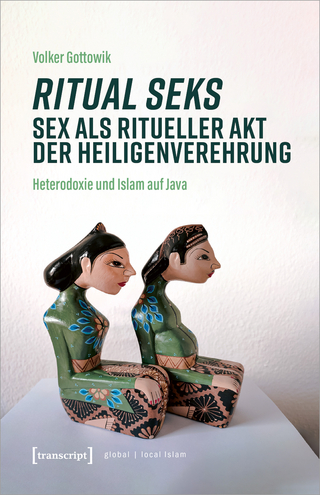
Inscriptions of Campa - based on the editions and translations of Abel Bergaigne, Étienne Aymonier, Louis Finot, Édouard Huber and other French scholars and of the work of R. C. Majumdar
Newly presented, with minor corrections of texts and translations, together with calculations of given dates
Seiten
2004
|
1., Aufl.
Shaker (Verlag)
978-3-8322-2861-3 (ISBN)
Shaker (Verlag)
978-3-8322-2861-3 (ISBN)
- Keine Verlagsinformationen verfügbar
- Artikel merken
The inscriptions of the ancient kingdom of Campa, formerly covering Central and parts of South Vietnam, have been published and translated from the end of the 19th century onwards, mostly by French scholars, starting with Abel Bergaigne and Etienne Aymonier whose work was continued by Louis Finot, Edouard Huber, George Coedes and others. The earlier publications appeared in Journal Asiatique, the later ones mostly in the Bulletin de l'Ecole Francaise d'Extrème-Orient and were partly re-published by Claude Jacques in 1995 (see Bibliography), but without the work of Bergaigne which was published as part of the Inscriptions sanscrites de Campa et du Cambodge (together with Auguste Barth) in 1885-93.
In 1927 Ramesh Chandra Majumdar re-published most of the Sanskrit inscriptions of Campa along with an English translation, in a few cases with a translation of the Cham inscriptions as well.
The task of the present work is a new presentation of a Romanized version of nearly all the texts of the inscriptions (both Sanskrit and Cham) along with English translations, adopted mainly from Majumdar's work with minor corrections; new translations have been made of these not found in Majumdar, based on the Freneh versions. In a few cases it was possible to complete a text by conjecture; especially certain calculations could be made even when passages of a text with the day of the week, tithi and astronomical details were partly damaged, but nevertheless could be calculated.
The presentation of the inscriptions runs as follows: after the heading, the date of the inscription (exactly if possible, or at least the century) is mentioned; if an inscription contains more information than the date of its origin, they are listed. Then follows the the running C.-number and the location with longitude and latitude, reference literature and in case of Sanskrit inscriptions in stanzas, the metres.
The short descriptions of the inscriptions are also based on the work of Majumdar, omitting the longer ones of the Freneh scholars.
For the Sanskrit portions, the text of the original in epigraphic Sanskrit is repeated in a Standard Sanskrit version (in italics) which includes conjectural corrections if necessary (for the unintelligible words). An inscription is concluded by a translation. For the sake of orientation a list of the kings of Campa with tentative dates is given.
In 1927 Ramesh Chandra Majumdar re-published most of the Sanskrit inscriptions of Campa along with an English translation, in a few cases with a translation of the Cham inscriptions as well.
The task of the present work is a new presentation of a Romanized version of nearly all the texts of the inscriptions (both Sanskrit and Cham) along with English translations, adopted mainly from Majumdar's work with minor corrections; new translations have been made of these not found in Majumdar, based on the Freneh versions. In a few cases it was possible to complete a text by conjecture; especially certain calculations could be made even when passages of a text with the day of the week, tithi and astronomical details were partly damaged, but nevertheless could be calculated.
The presentation of the inscriptions runs as follows: after the heading, the date of the inscription (exactly if possible, or at least the century) is mentioned; if an inscription contains more information than the date of its origin, they are listed. Then follows the the running C.-number and the location with longitude and latitude, reference literature and in case of Sanskrit inscriptions in stanzas, the metres.
The short descriptions of the inscriptions are also based on the work of Majumdar, omitting the longer ones of the Freneh scholars.
For the Sanskrit portions, the text of the original in epigraphic Sanskrit is repeated in a Standard Sanskrit version (in italics) which includes conjectural corrections if necessary (for the unintelligible words). An inscription is concluded by a translation. For the sake of orientation a list of the kings of Campa with tentative dates is given.
| Reihe/Serie | Berichte aus der Orientalistik |
|---|---|
| Sprache | englisch |
| Maße | 148 x 210 mm |
| Gewicht | 294 g |
| Einbandart | Paperback |
| Themenwelt | Sozialwissenschaften ► Ethnologie ► Völkerkunde (Naturvölker) |
| Schlagworte | archaeology • Cham • HC/Ethnologie/Völkerkunde • Hinduism • Sanskrit • Vietnam |
| ISBN-10 | 3-8322-2861-6 / 3832228616 |
| ISBN-13 | 978-3-8322-2861-3 / 9783832228613 |
| Zustand | Neuware |
| Haben Sie eine Frage zum Produkt? |
Mehr entdecken
aus dem Bereich
aus dem Bereich
Schweden : Ambiguitäten verhandeln - Tolerieren als soziale und …
Buch | Softcover (2023)
Brill Schöningh (Verlag)
49,90 €
Buch | Softcover (2023)
transcript (Verlag)
54,00 €


